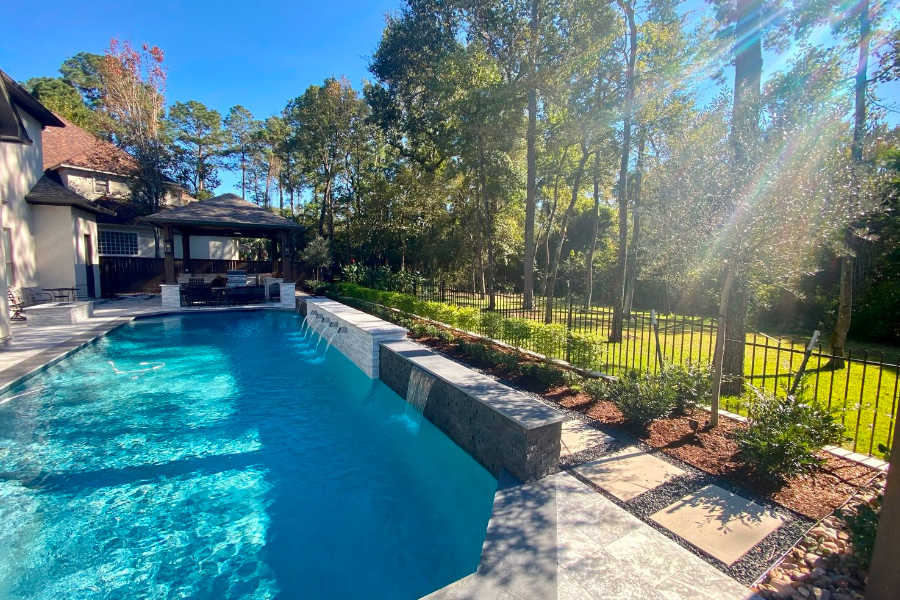
Building Cost Friendly Natural Pools and Pool Calculator
Swimming is one of the best things to do in the summer, whether you want to practice your dolphin dives or just relax on a raft. You can prevent the sultry dog days of summer by creating an idyllic water oasis in your own backyard with a minimum of materials and chemicals. Natural swimming pools is the answer for the same. Rebar, gunite, fiberglass, chlorine, and a filtration system that uses a lot of energy are among the many items offered by the majority of American swimming pool builders when asked to construct a backyard pool. However, in recent years, a small number of builders and a growing number of homeowners have learned how to construct pools without utilizing a large quantity of manufactured materials or chemical additives. They have discovered that it is possible to construct pools that more closely resemble the natural landscape and blend in with it.
About Natural Swimming Pools –
If you are worried about the construction of a pool in your backyard and financing of pools, then check out here the pool loan calculator. Click on the link referenced here for more details. In natural swimming pools, aquatic plants are used in place of harmful chemicals and complicated mechanical filtering systems, and gravel, clay, and stone are used in place of concrete or fiberglass. The plants enhance the pool with oxygen, support advantageous micro-organisms that drink trash and possibly destructive creatures, and give environment to frogs, dragonflies, and other water life. A beautiful, ecologically diverse, and reasonably priced system is the end result.
Building a Natural Pool –
You can build a natural pool yourself for as little as $3,000, whereas conventional pools can cost tens of thousands of dollars.) Natural swimming pools don’t need any harmful chemicals, don’t require a lot of technology, and once they’re set up, only a little bit of maintenance is needed. The pool won’t need to be drained every autumn. You will only fill the pool once, with the exception of occasionally topping it off. The simplest, cheapest, and most eco-friendly method of building a swimming pool is to dig a hole in the ground. Your pool can be as shallow or as deep as you like, but the most important thing is to make sure the sides slope. The soil will collapse otherwise. The ratio ought to be one foot of vertical drop for every three feet of horizontal drop. As per the Mr. Tom, he describes the effect as more like a soup bowl rather than a bathtub. One of the primary reasons conventional pools are built with a steel system is to guarantee the walls stay vertical and opposite to the base surface of the pool. If you build a pool with sloping sides, you won’t need any steel reinforcement.
Where To Spend the Money –
By allocating at least half of your pool’s surface area to shallow plants, either at one end or in a ring around the sides, you can avoid using chlorine and spending a lot of money on filters and pumps. Your pool’s swimming area and the filtration area, or plant zone, should be separated (see the image gallery for an illustration). As water passes through the fibrous root structure of the plants, bacteria concentrated on the roots act as a biological filter, removing contaminants and excess nutrients from the water. However, a rim located within an inch of the water’s surface keeps the plants in place while allowing water from the swimming area to move to the plant zone for filtering. Decomposer creatures, additionally found in the plants’ root zones, drink the microorganisms, actually taking out submerged squander development.

